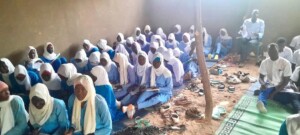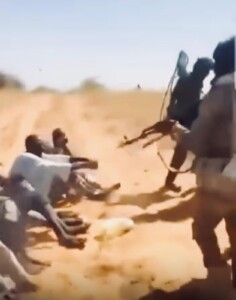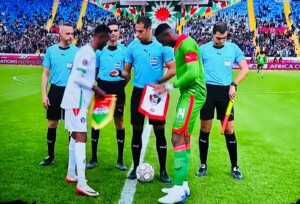Darfur referendum: ‘States option’ wins by a landslide
The Commission for the Administrative Referendum of Darfur has announced that the ‘states option’ attracted 97.72 percent of the votes cast, as opposed to just 2.28 percent choosing the ‘region option’.
The Commission for the Administrative Referendum of Darfur has announced that the ‘states option’ attracted 97.72 percent of the votes cast in the 11-13 April referendum, as opposed to just 2.28 percent choosing the ‘region option’.
At a press conference held at the Friendship Hall in the Sudanese capital of Khartoum today, the Commission’s Chairman, Omer Ali Gama disclosed that 3,081,976 voted for the ‘states option’ and 71,920 votes were cast for the ‘region option’, the Sudan News Agency (SUNA) reports.
This represents less than half of the 6.2 million population of Darfur, according to UN estimates.
Chairman Ali Gama pointed out that 102 foreign observers and 1,500 national observers, representing Russia, China, Kenya, Libya, Mozambique, Turkey, Arab League, AU, Islamic Relief Agency, and the African Journalists Union, participated in the referendum process.
In an interview with Radio Dabanga following the conclusion of a series of meetings between the armed movements and civilian components of the Sudan Appeal in Paris last week, Imam El Sadig El Mahdi, leader of the opposition National Umma Party, pre-empted the results of the referendum saying his party “refuse to recognise it” and called it “false”.
El Mahdi stressed that “both the elections of 2015 and the Darfur administrative referendum are based on false procedures” and that “their results cannot gain legitimacy”.
DDPD
The controversial referendum was designed to allow people living in all five Darfur states to define the permanent administrative status of the region, by opting for the current status of five states (states option), or for a return to Darfur as one large state or province (region option).
The referendum was supposed to be held within one year after the signing of the Doha Document for Peace in Darfur (DDPD) accord, finalised at the All Darfur Stakeholders Conference in May 2011.
Following the announcement of the 11-13 April referendum date by the Sudanese government in January 2016, Sudan’s national dialogue conference recommended it be postponed. In the run-up to the referendum, civic and opposition leaders called on Darfuris to shun the referendum and “stay at home”. They insisted that the referendum should only be held once the security and humanitarian situation in Darfur has been addressed.
The referendum sparked protests by students and the displaced, and was reportedly widely boycotted by the people of Darfur – reflected in the low voter turnout. This in spite of a tour of the region by Sudan’s President Omar Al Bashir in the week before the poll, during which he addressed rallies and civic meetings designed to drum-up support.
International concern
There were also international concerns: In a press statement prior to the plebiscite, US State Department spokesman Mark Toner said that lasting peace in Sudan “will only be attained through a political process that addresses the underlying causes of the Darfur conflict.” The USA expressed serious concern regarding the referendum on the political future of Darfur, as it “undermines” the current peace process. Voting under current rules and conditions cannot be considered a “credible expression of the will of the people of Darfur”.











 and then
and then